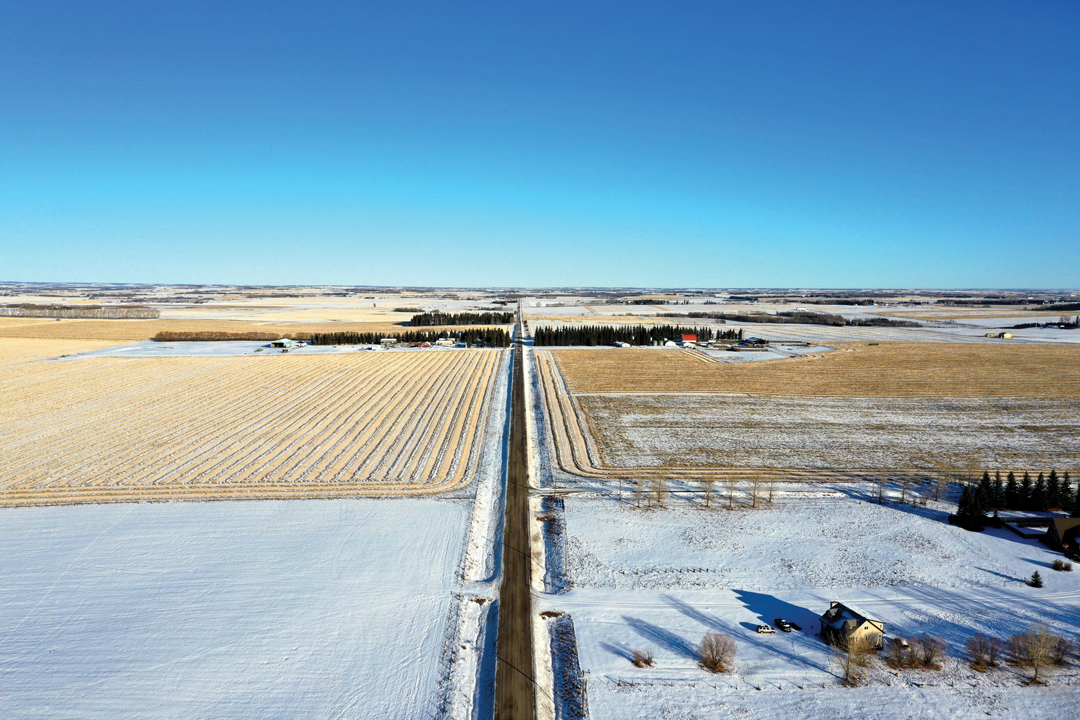PAYING FOR PICTURES
SPENDING MONEY NOW TO SAVE MONEY TOMORROW
BY BENJAMIN ALLEN
For many farmers, the idea of paying money for pictures of their fields seems a bit, well, crazy. If you can walk a field and see a problem, why would you pay money for a picture of that problem? What’s the point?
The point is time. As the old saying goes, time is money. Expressed as an equation, time = money.
Walking fields, or even driving by fields, on a regular basis takes a lot of time. The more acres you handle, the more time these field checks take up. At a certain threshold—generally understood to be 5,000 acres—there just isn’t enough time to look at the fields often enough. So pictures save time, which saves money.
Pictures of fields also give you a bird’seye view, allowing you to quickly look at an entire field. This eliminates the problem of missing trouble spots that can’t be seen from the road. This is especially valuable with bigger fields, as farmers just don’t have the time to walk the entire field with any regularity.
But it’s not just about time, it’s also about protecting yield. Advanced imagery for agriculture can also give us pictures that show more than the human eye can see. For example, Normalized Difference Vegetation Index (NDVI) images can show us the variation in plant health far beyond what we can see without a photographic lens. The human eye looks at a field and tends to see green plants, only picking up on big differences, such as a big patch of yellow plants or a drowned-out area of a field. But NDVI images show us much more detail on the health of the plants, allowing us to focus our problem-solving efforts on specific areas of the field that may not yet be showing yellowing or dying plants. Stepping in to mitigate these problems before they become visible to the naked eye gives us a better chance to limit yield losses.
So if pictures of our fields can save us time spent scouting, then we are saving money with their use. Further, if advanced pictures can help us address crop issues before our eyes can see them, then we can save bushels by intervening while there is still time. Saving bushels = saving money.
The trick is to make sure that any images you buy for your farm are timely. In Canada, that means the months of May, June and July are the prime window of opportunity to identify any crop issues while there is still time to address them. Also, make sure the images you pay for allow you to make decisions. Cool pictures aren’t enough. You need to be able to make a decision when you look at the image, and you need to be able to make that decision quickly. If you aren’t sure how an image would drive you to act on a problem, then don’t pay for it.
A good example of in-season problem solving involves fungicide use. In many cases, yield loss due to fungus problems is already determined by the time you can see indicators with the human eye. In these cases, NDVI imagery can help farmers make spray/no-spray decisions with a much higher level of confidence days before these problems become costly. Fungicide use saves yield, and the decision of whether or not to use it is a difficult one. But advanced imagery solutions take the decision out of the realm of speculation and place it firmly into the realm of quantifiable data.
So go ahead and buy imagery—just make sure you buy imagery that drives actions. Pictures save time. The right pictures save yield. Both save money.







Comments